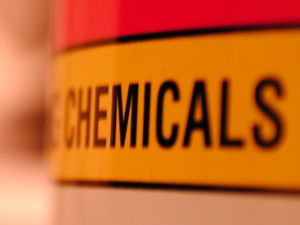The Importance of Testing Your Well Water
The current EPA Environmental Protection Agency regulations, which govern the standards of public drinking water supplies in the United States, are not applicable to individual, privately owned water systems, including privately owned wells. It is, therefore, up to the owner of their own wells to ensure the safety of the drinking water.
Potential Chemical Contaminants:
There are a number of chemical contaminants that can be found in your drinking water supply which may be a serious health concern. One of the most common forms of contamination in drinking water supplies is nitrate or nitrates. While nitrates are naturally found in a number of foods, high levels of nitrates contaminating drinking water can have severe health effects especially for small children and those with a vulnerable immune system or medical condition. Nitrate can enter the groundwater through agricultural runoff, animal waste, fertilizer products, flooded sewers and even decaying plants and can also depend on the geology of the region, as certain areas may have nitrate levels higher than the EPA standards.
Other chemical contaminants of potential concern include heavy metals, pesticides or volatile organic compounds. Volatile organic compounds or VOCs are fuel or industrial related chemicals with the potential for causing serious health problems. These could include chemicals such as carbon tetrachloride, benzene, toluene, trichloroethylene. The exact nature of any chemical contaminants can depend on a number of factors including whether you live in a rural or urban area, where your well is located and which state you live in.
Portability Microbiological Pathogens
There are a number of microbiological pathogens which can contaminate your drinking water supply and potentially compromise your health. This could include the presence of parasites, bacteria or viruses. Typically, these pathogens can be found in animal feces, which can contaminate the well water from agricultural runoff, but some pathogens can also be naturally occurring in the soil. The primary concern with contamination from microbiological pathogens is that they typically do not affect the taste or odor of the water, making it difficult to identify contamination without proper testing. The potential risk to health from these agents should not be underestimated as pathogens such as e-coli or enterococcus bacteria will commonly cause stomach problems or gastroenteritis, but in some rare cases could result in the development of meningitis or hepatitis.
Testing Your Well Water:
It is important to have confidence that your drinking water supply is free of contaminants, so regular testing is recommended. A minimum standard is to have the well checked every spring, but most experts recommend testing three or four times a year. You should also test your well if there are known problems in your local area, you have experienced issues near the well, such as land disturbances or flooding, or if there is a noticeable change in the water quality. This will ensure that the level of any contaminants in your drinking water supply is within the EPA guideline recommendations and that it is safe for you and your family to use. Remember that not all contaminants can affect the taste, appearance or odor of the water, so don’t wait until you notice a change before you have your well water tested.
About The Author:
Greg Scott is President of Valparaiso based Miracle/EcoWater Systems, the premier water conditioning company in Northwest Indiana serving the Lake, Porter and LaPorte County areas. A 3rd generation water treatment professional, Greg grew up in the family owned business started by his grandfather in the late fifties. He has made water treatment his life and under his direction and high-standards, the company’s water treatment experience, knowledge, and products are unrivaled in region.
